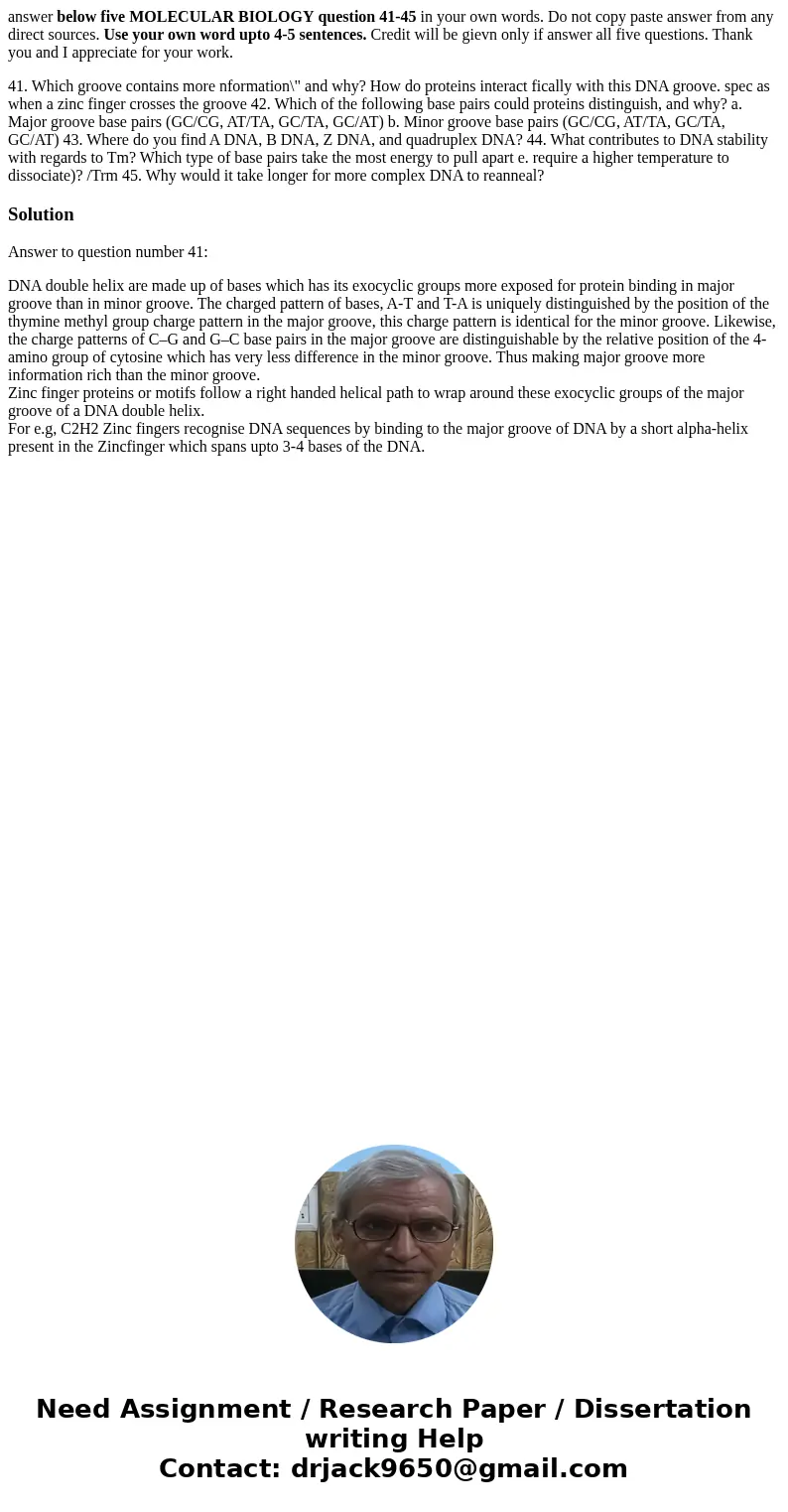answer below five MOLECULAR BIOLOGY question 4145 in your ow
answer below five MOLECULAR BIOLOGY question 41-45 in your own words. Do not copy paste answer from any direct sources. Use your own word upto 4-5 sentences. Credit will be gievn only if answer all five questions. Thank you and I appreciate for your work.
41. Which groove contains more nformation\" and why? How do proteins interact fically with this DNA groove. spec as when a zinc finger crosses the groove 42. Which of the following base pairs could proteins distinguish, and why? a. Major groove base pairs (GC/CG, AT/TA, GC/TA, GC/AT) b. Minor groove base pairs (GC/CG, AT/TA, GC/TA, GC/AT) 43. Where do you find A DNA, B DNA, Z DNA, and quadruplex DNA? 44. What contributes to DNA stability with regards to Tm? Which type of base pairs take the most energy to pull apart e. require a higher temperature to dissociate)? /Trm 45. Why would it take longer for more complex DNA to reanneal?Solution
Answer to question number 41:
DNA double helix are made up of bases which has its exocyclic groups more exposed for protein binding in major groove than in minor groove. The charged pattern of bases, A-T and T-A is uniquely distinguished by the position of the thymine methyl group charge pattern in the major groove, this charge pattern is identical for the minor groove. Likewise, the charge patterns of C–G and G–C base pairs in the major groove are distinguishable by the relative position of the 4-amino group of cytosine which has very less difference in the minor groove. Thus making major groove more information rich than the minor groove.
Zinc finger proteins or motifs follow a right handed helical path to wrap around these exocyclic groups of the major groove of a DNA double helix.
For e.g, C2H2 Zinc fingers recognise DNA sequences by binding to the major groove of DNA by a short alpha-helix present in the Zincfinger which spans upto 3-4 bases of the DNA.

 Homework Sourse
Homework Sourse